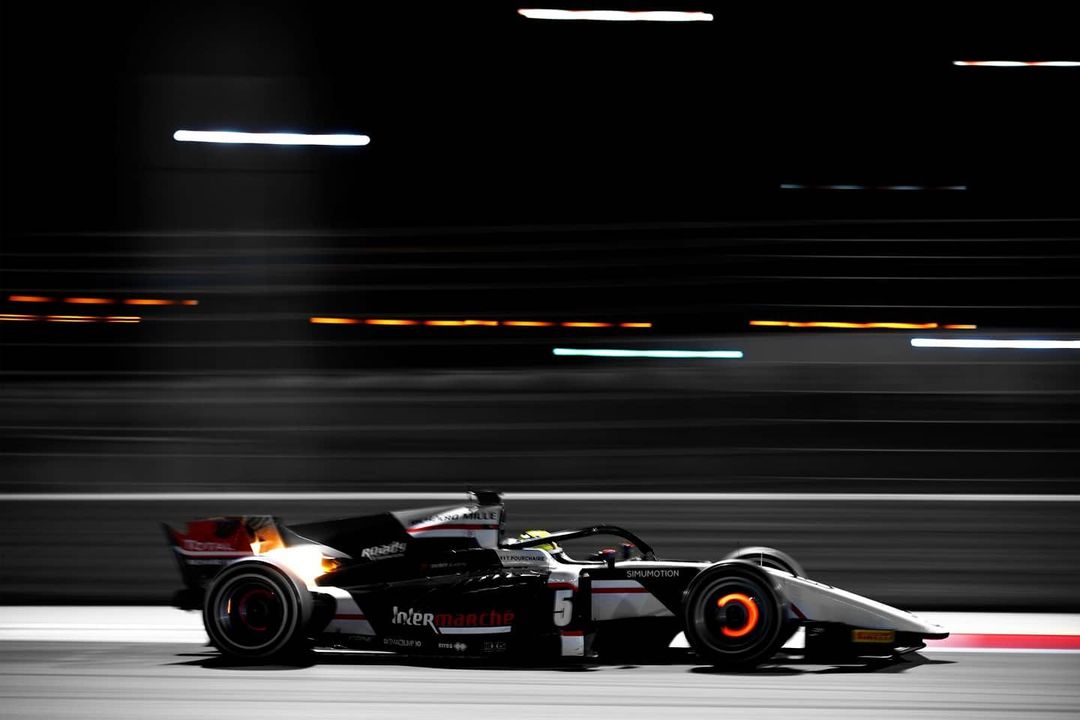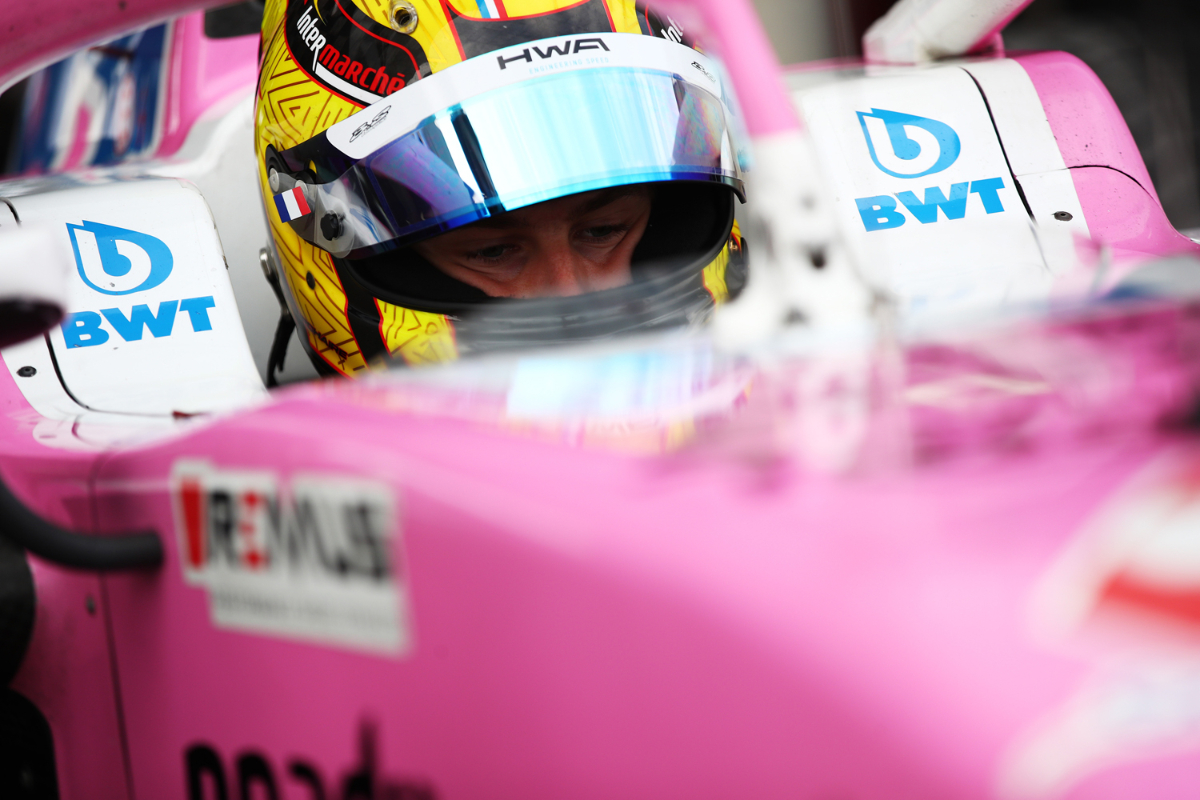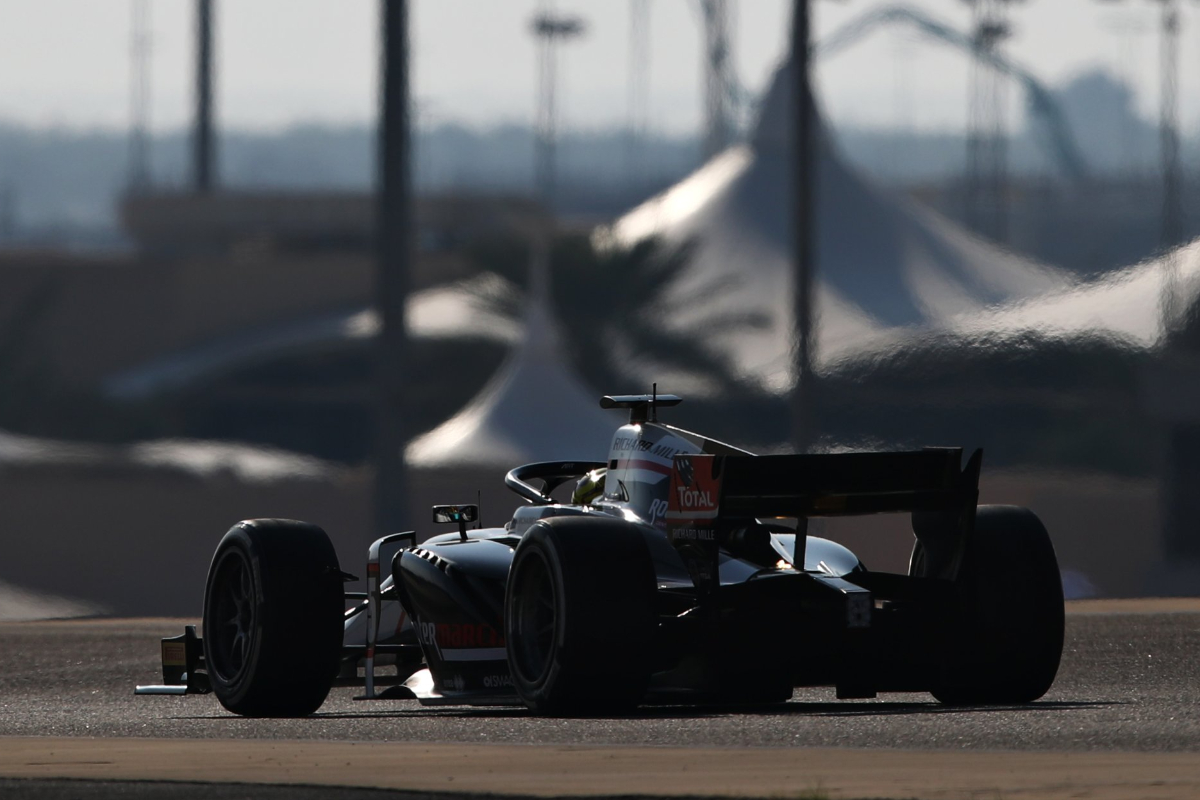
Photos: Formula Motorsport Limited
He’s still only 17 years old, but Theo Pourchaire already has four F2 starts under his belt, long-term F1 backing and a plum seat for 2021 that could launch him into the pinnacle of single-seaters as early as 2022
A lot of drivers would love to be in the position of FIA Formula 3 Championship runner-up Theo Pourchaire right now.
The French Riviera-based 17-year-old will be racing in Formula 2 this year with ART Grand Prix, and continuing his successful partnership with the Sauber company behind the Alfa Romeo Racing Formula 1 team.
While is all sounds rather too ideal to be true, Pourchaire has put himself in this position after a brilliant first three years in car racing. The Frenchman made his single-seater debut aged 14 in French Formula 4 in 2018, and won the Junior title for drivers of the same age with 16 class wins as well as an overall win at Spa-Francorchamps and fastest lap in just his second race.
He was arguably ready then to step up a category. Formula Renault 2.0 would have been ideal had it still been around as the basis of any major European championships, but a second year in F4 was the only option as Pourchaire was still only 15.
In November he penned a deal to join Ralf Schumacher’s US Racing team in ADAC F4 for 2019, and three months later the newly created Sauber Junior Team aligned itself with the four-car squad. This wasn’t a simple branding deal, with the French-speaking line-up a clear stamp of Sauber team principal and ART GP co-founder Frederic Vasseur’s influence and the technical support of Charouz Racing System (racing under the Sauber name in F2) being brought into the team too.
Whichever of the four talented youngsters came out on top could be fairly confident in retaining their F1 junior status for 2020, and it ended up being Pourchaire after a thrilling title battle with Red Bull junior Dennis Hauger and team-mate Arthur Leclerc (who got poached from Sauber by the Ferrari Driver Academy).
Pourchaire got his first taste of FIA F3 with Carlin in post-season testing at Valencia, but then teamed up with Vasseur’s old outfit ART GP and signed with the squad before the end of the year. He was now 16, and headed to F3.
 “I still have a lot to learn, but with a team such as ART Grand Prix, I think I can make it. I’m young and I want to take the time to do things right,” he said upon signing his first contract with the French squad.
“I still have a lot to learn, but with a team such as ART Grand Prix, I think I can make it. I’m young and I want to take the time to do things right,” he said upon signing his first contract with the French squad.
Pourchaire’s approach hasn’t changed since, despite proving himself in FIA F3 so quickly that he earned himself an early F2 debut last November with HWA Racelab at Bahrain – and took two 18th places with the struggling German team.
His F3 season actually began from 20th place on the grid at the Red Bull Ring, but he ended up as the fourth fastest over a single lap on average and was fifth quickest when looking at fastest laps in races too. The most impressive statistic however, besides becoming the youngest ever winner at this level with victory on just his fourth start, was his race pace.
Pourchaire, the youngest and one of the least experienced drivers on the grid, was second only to Prema’s Frederik Vesti on this measure by 0.177%. And when it came to scoring points, he was second only to Vesti’s team-mate Oscar Piastri.
According to Pourchaire, Sauber didn’t think he would be capable of adapting to FIA F3 in just one season. But once his campaign was complete, the company was quick to get planning for 2021 – including finding the backing for a step up to F2.
Discussions immediately began to remain with ART GP, but when HWA was without a driver for the final two 2020 rounds an early debut beckoned. A place in the post-season test with ART GP, which he was “doing everything” he could to join in 2021, handed Pourchaire a great opportunity to compare two different teams on the same circuit and measure his own progress and competitiveness as well as the teams’. But did any of that experience provide insight into his 2021 prospects?
“I don’t know, to be honest,” Pourchaire admits to Formula Scout. “I can’t answer this question, because yeah for sure I did two races in Bahrain, and this will help me a lot, but I did it with HWA. The feeling with the car was not the same as I had at ART.
 “Then I did the test with ART, but it was really strange. I did the test with Christian Lundgaard, and we were about 1.2 to 1.5 seconds slower than some drivers in that – that is a bit strange. I think that’s not the reality, so I don’t know [the competitive order]. And if I’m far back I will work a lot to come back in the next rounds.”
“Then I did the test with ART, but it was really strange. I did the test with Christian Lundgaard, and we were about 1.2 to 1.5 seconds slower than some drivers in that – that is a bit strange. I think that’s not the reality, so I don’t know [the competitive order]. And if I’m far back I will work a lot to come back in the next rounds.”
The long-run pace in that Bahrain test left Renault F1 junior Lundgaard and Pourchaire feeling far more confident, and the latter told Formula Scout at the time that he was “the most prepared” of the F3 drivers moving up to F2 this year.
Joining him in that step is Piastri at Prema, Red Bull junior Liam Lawson at Hitech GP, Lirim Zendeli at MP Motorsport, Alessio Deledda and Matteo Nannini at HWA, and very probably David Beckmann and Clement Novalak too.
The splitting of the F2 and F3 calendars for 2021 has left the rookies with a harder task than usual, as only two of the circuits they raced on last year are included in F2’s upcoming schedule. With two race weekends of experience already under his belt at Bahrain, location of the season opener in March, Pourchaire really does have a preparation advantage over his rivals.
Four of the eight F2 rounds will take place on street circuits, and another big change for this year is the weekend format. Rather than a feature race on Saturday and a shorter reversed grid sprint race on Sunday as used for the past 16 years in F1’s primary feeder series, F2 will now have two sprint races on a Saturday and the feature on Sunday.
“My thoughts on the F2 calendar… I don’t know what to say. I know only Bahrain, Monza and Silverstone. The rest are just new tracks for me. It looks interesting,” Pourchaire says.
“Some people don’t like the calendar, I don’t know why. It’s new and it looks interesting, and it looks difficult for the drivers with some tracks like Monaco and [the debuting] Jeddah in Saudi Arabia. And three races per weekend, it will be difficult. Physically, mentally, it will be really difficult but there will be a lots of action on track.”
 It could be expected that with more reversed grid races, and on street circuits too, the action on track may be messier and limit the learning of a rookie if they’re going to find themselves in some tight spaces down the grid too often. And the total racing mileage looks set to be less anyway, as the 24-race schedule now has eight feature races rather than 12.
It could be expected that with more reversed grid races, and on street circuits too, the action on track may be messier and limit the learning of a rookie if they’re going to find themselves in some tight spaces down the grid too often. And the total racing mileage looks set to be less anyway, as the 24-race schedule now has eight feature races rather than 12.
“As a rookie, it’s always better to have more practice, more free practice, and now it will be more races. I think it doesn’t change a lot, to be honest. Just it will be I think even more difficult because you will have to be super consistent and you will have to score every race if you want to win the championship.
“It looks good, but two races in one day will be difficult, to be honest. Physically and mentally it will not be easy.
“I’m really looking forward to [street circuits] because I think it will be a great challenge for me.
“I don’t know Monaco, I don’t know Baku, I don’t know Jeddah, and a lot of other circuits like Sochi, Abu Dhabi. So it will be difficult. But I think it’s interesting. I really want to drive here in Monaco, I think it’s the dream of every racing driver, and I hope there will be the race; they will not cancel the race because of the COVID-19 situation, I hope.
“[But with] a lot of street circuits, I think this will help a bit the more experienced drivers.”
Pourchaire would hope that rather than being joined by another rookie he has Lundgaard remaining at ART GP as his team-mate – which is expected to be the case – as the levelling of the playing field that Pirelli’s new 18-inch tyres provided in 2020 will be reduced now all of the teams and probably half of the drivers will have a season of experience using them. And it was clear by Bahrain that some of the teams understood the rubber far better than others – even ART GP wasn’t trouble-free.
 “I hope I will learn a lot from my team-mate,” says Pourchaire. “I hope my team-mate will have a lot of experience, and it’s the only driver where you can compare yourself with because your team-mate has the same car as you. We will see.
“I hope I will learn a lot from my team-mate,” says Pourchaire. “I hope my team-mate will have a lot of experience, and it’s the only driver where you can compare yourself with because your team-mate has the same car as you. We will see.
“It’s also the person to beat for me, so I will learn a lot from him, for sure, and the other way around.”
In the past, ART GP line-ups have looked unbalanced despite the high calibre of signings, and since the introduction of the current Dallara F2 2018 car the average gap between its drivers has been 192 points and 11 places in the standings.
Pourchaire isn’t thinking about those numbers though, or even the ones which would make him a record-breaker again.
McLaren F1 star Lando Norris currently holds the record as the youngest driver to ever win in F1’s primary feeder series, aged 18 years, 4 months and 25 days when he claimed his sole victory in the 2018 season opener at Bahrain, while Antonio Garcia (17y, 7m & 20d) in 1998 and Fernando Alonso (17y, 7m & 30d) in 1999 were even younger when they won in the series that went on to become the GP2-rivalling FR3.5.
The biggest achievement of them all is Max Verstappen’s 2016 Spanish Grand Prix triumph, achieved when he was 18 years, 7 months and 15 days old. Pourchaire will break Norris’s record if he makes the top step of the podium at any point in 2021.
If he does it in any of three races at Bahrain, he will break Garcia’s record for the second tier of single-seaters by just over a week, and in the very unlikely situation that Pourchaire joins Alfa Romeo in 2022 and has a car that could carry him to victory on his F1 debut, he would break Verstappen’s record too.
“It will be amazing for sure. But I don’t really care about those statistics. There is a lot of work to do, a lot of work to do, if I want to go to Formula 1 one day. I try to focus on myself.

Photo: Formula Motorsport Limited
“I will not have so much experience compared to some drivers, like Guanyu Zhou or a really fast driver in their second, third or fourth year of F2. But it would be amazing for sure to win the F2 [title].
“I will be with Sauber Academy again this year. They will help me a lot, and I’m grateful for this. I would like to thank them, because they are great people – I think of Frederic Vasseur and [Sauber’s long-time team manager] Beat Zehnder.”
The combination of Pourchaire’s behind-the-wheel ability and the ambitions of Vasseur in particular means it’s not too unlikely that Pourchaire will be in an Alfa Romeo F1 car in 2022 – whether that be in a test or race capacity.
The team is well known for bringing in some of F1’s best young talent – its current driver Kimi Raikkonen debuted in F1 with the outfit in 2000 after just two years in the lower formulas – and more importantly has proven it can genuinely support rookies in a way that teams further up the grid have not.
Before the F2 season has even begun, it’s already clear who Pourchaire will be fighting for a potential Alfa Romeo seat, and three of them are testing in a Ferrari F1 car this week.
Robert Shwartzman won four races as an F2 rookie last year with Prema, and remains with the team for a sophomore season, while fellow Ferrari junior Marcus Armstrong moves to DAMS after a tricky first campaign in the seat Pourchaire now occupies. Callum Ilott won’t be racing in F2 this year, but the 2020 runner-up is now Ferrari’s official test driver.
Ferrari has an option on who fills one of Alfa Romeo’s cars, but Sauber has the say on the other and it sounds like Pourchaire is the protege it has lined up to jump in when the time comes.
Further reading
Who was really fastest in FIA F3 in 2020, and why?
Kanonloppet 1973: The last time F2 held a three-race weekend
Scout Report: Sauber’s ADAC Formula 4 juniors (October 2019)